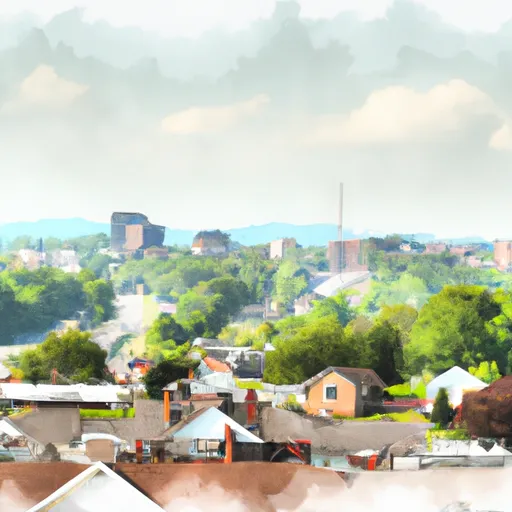-
 Snoflo Premium
Snoflo Premium
Get unlimited access to all our content
With no Ad interruptions! - Start Your Free Trial Login with existing account
Smyrna
Eden Index
Climate
7.8
•
Recreation
5.8
•
Community
3.0
•
Safeguard
5.9/10

Smyrna, Tennessee, located in Rutherford County, has a humid subtropical climate. Summers are hot and humid, with average temperatures ranging from the high 80s to low 90s Fahrenheit. Winters are mild, with temperatures typically in the mid-40s to mid-50s. Precipitation is relatively evenly distributed throughout the year, with an average annual rainfall of around 50 inches.
When it comes to hydrology constituents, Smyrna is not known for any significant bodies of water. However, it is situated near Stewart Creek, which flows through the town, providing some scenic views and minor recreational opportunities like fishing or canoeing.
Smyrna offers several outdoor recreation opportunities. The city maintains numerous parks and green spaces, including Lee Victory Recreation Park, which features walking trails, sports fields, and a playground. Sharp Springs Park is another popular destination, offering picnic areas, a lake, and plenty of space for hiking and wildlife observation. Additionally, Smyrna is close to the beautiful Percy Priest Lake, where visitors can enjoy boating, swimming, and camping.
Overall, Smyrna, Tennessee, with its pleasant climate, modest hydrology constituents, and various outdoor recreation opportunities, offers residents and visitors a chance to enjoy nature and engage in various activities throughout the year.
What is the Eden Index?
The Snoflo Eden Index serves as a comprehensive rating system for regions, evaluating their desirability through a holistic assessment of climate health, outdoor recreation opportunities, and natural disaster risk, acknowledging the profound impact of these factors on livability and well-being.
Climate Health Indicator (CHI): 7.8
Smyrna receives approximately
1320mm of rain per year,
with humidity levels near 84%
and air temperatures averaging around
15°C.
Smyrna has a plant hardyness factor of
7, meaning
plants and agriculture in this region tend to thrive during the non-winter months.
By considering the ideal temperature range, reliable water supplies, clean air, and stable seasonal rain or snowpacks, the Climate Health Indicator (CHI) underscores the significance of a healthy climate as the foundation for quality living.
A healthy climate is paramount for ensuring a high quality of life and livability in a region, fostering both physical well-being and environmental harmony. This can be characterized by ideal temperatures, reliable access to water supplies, clean air, and consistent seasonal rain or snowpacks.
Weather Forecast
Streamflow Conditions
Lower Cumberland
Area Rivers
Lower Cumberland
Snowpack Depths
Lower Cumberland
Reservoir Storage Capacity
Lower Cumberland
Groundwater Levels
Recreational Opportunity Index (ROI): 5.8
The Recreational Opportunity Index (ROI) recognizes the value of outdoor recreational options, such as parks, hiking trails, camping sites, and fishing spots, while acknowledging that climate plays a pivotal role in ensuring the comfort and consistency of these experiences.
Access to outdoor recreational opportunities, encompassing activities such as parks, hiking, camping, and fishing, is crucial for overall well-being, and the climate plays a pivotal role in enabling and enhancing these experiences, ensuring that individuals can engage in nature-based activities comfortably and consistently.
Camping Areas
| Campground | Campsites | Reservations | Toilets | Showers | Elevation |
|---|---|---|---|---|---|
| Cedars of Lebanon State Park | 117 | 686 ft | |||
| Anderson Road - J. Percy Priest Reservoir | 10 | 535 ft | |||
| Oak Mountain State Park | 145 | 683 ft | |||
| Easter Posey MWR Military - Redstone Arsenal | None | 569 ft | |||
| Redstone Arsenal RV Military | None | 637 ft | |||
| Poole Knobs - J. Percy Priest Reservoir | 88 | 537 ft | |||
| Ditto Landing City Campground | None | 567 ft | |||
| Monte Sano State Park | 104 | 1,608 ft | |||
| Sharon Johnston Park | 33 | 771 ft | |||
| Henry Horton State Park | 56 | 672 ft |
Nearby Ski Areas
Catastrophe Safeguard Index (CSI):
The Catastrophe Safeguard Index (CSI) recognizes that natural disaster risk, encompassing floods, fires, hurricanes, and tornadoes, can drastically affect safety and the overall appeal of an area.
The level of natural disaster risk in a region significantly affects safety and the overall livability, with climate change amplifying these risks by potentially increasing the frequency and intensity of events like floods, fires, hurricanes, and tornadoes, thereby posing substantial challenges to community resilience and well-being.
Community Resilience Indicator (CRI): 3.0
The Community Resilience Indicator (CRI) recognizes that education, healthcare, and socioeconomics are crucial to the well-being of a region. The CRI acknowledges the profound impact of these elements on residents' overall quality of life. By evaluating educational resources, healthcare accessibility, and economic inclusivity, the index captures the essential aspects that contribute to a thriving community, fostering resident satisfaction, equity, and social cohesion.

